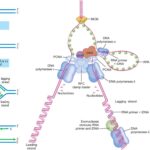IB Biology 40 Views 1 Answers
Sourav PanLv 9November 8, 2024
What is the function of Type I pneumocytes in the alveoli, and how are they adapted for gas exchange?
What is the function of Type I pneumocytes in the alveoli, and how are they adapted for gas exchange?
Please login to save the post
Please login to submit an answer.
Sourav PanLv 9May 15, 2025
Type I pneumocytes, also known as type I alveolar cells, play a crucial role in the process of gas exchange in the lungs. They are specifically adapted to facilitate the efficient transfer of oxygen and carbon dioxide between the alveoli and the blood in adjacent capillaries. Here’s an overview of their functions and adaptations:
Function of Type I Pneumocytes
- Gas Exchange:
- Type I pneumocytes are primarily responsible for the exchange of gases (oxygen and carbon dioxide) between the alveoli and the bloodstream. They cover approximately 95% of the alveolar surface, providing a vast area for gas diffusion.
- Formation of the Blood-Air Barrier:
- These cells form a thin layer that constitutes part of the blood-air barrier, which is essential for efficient gas exchange. The barrier consists of the type I pneumocyte layer, the endothelial cells of the capillaries, and their respective basement membranes, allowing gases to diffuse easily due to minimal distance.
Adaptations for Gas Exchange
- Thin Structure:
- Type I pneumocytes are extremely thin (approximately 0.1 to 0.2 micrometers), which minimizes the diffusion distance for gases. This thinness is critical for rapid gas exchange; oxygen can quickly diffuse into the blood while carbon dioxide diffuses out into the alveoli.
- Squamous Shape:
- The flattened (squamous) shape of type I pneumocytes increases their surface area relative to volume, enhancing their ability to facilitate gas exchange efficiently.
- Tight Junctions:
- These cells are connected by tight junctions (occluding junctions), which prevent leakage of tissue fluid into the alveolar air space. This helps maintain a dry environment conducive to gas diffusion.
- Sparse Organelles:
- Type I pneumocytes contain fewer organelles compared to other cell types, which reduces cytoplasmic thickness and further aids in minimizing the barrier for gas diffusion.
- Pinocytotic Vesicles:
- The presence of pinocytotic vesicles in their cytoplasm may assist in removing small particles and contaminants from the alveolar surface, helping to keep the airspace clear for optimal gas exchange.
- Elasticity and Flexibility:
- The surrounding connective tissue provides elasticity, allowing alveoli to expand and contract during breathing without damaging the type I cells.
0
0 likes
- Share on Facebook
- Share on Twitter
- Share on LinkedIn
0 found this helpful out of 0 votes
Helpful: 0%
Helpful: 0%
Was this page helpful?




